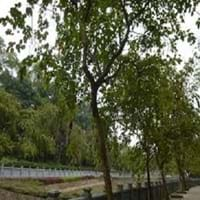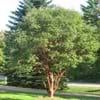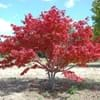Life Span
Perennial
Biennial
Origin
Australia
South-Eastern Asia, Southeastern Asia, China
Types
Not Available
Purple Orchid Tree, White Orchid Tree, Bidi leaf tree
Habitat
Scrubs, tussock grasslands, Upland savannas
Forests, Mountain Slopes, Valley
USDA Hardiness Zone
10-11
9-13
Sunset Zone
8, 9, 12, 13, 14, 15, 16, 17, 18, 19, 20, 21, 22, 23, 24
H1, H2, 9, 10, 11, 13, 18, 19, 20, 21, 22, 23
Habit
Upright/Erect
Upright/Erect
Flower Color
Lemon yellow
Light Pink, Magenta, Violet
Flower Color Modifier
Bicolor
Bicolor
Fruit Color
Gray Green
Green, Sandy Brown
Leaf Color in Spring
Blue Green
Green, Gray Green
Leaf Color in Summer
Blue Green
Green, Gray Green
Leaf Color in Fall
Blue Green
Green, Gray Green, Yellow green
Leaf Color in Winter
Blue Green
Green, Gray Green, Yellow green
Leaf Shape
Long Narrow
Butterfly shaped
Plant Season
Spring
Spring, Summer
Sunlight
Full Sun
Full Sun, Partial Sun
Type of Soil
Loam, Sand
Clay, Loam, Sand
The pH of Soil
Acidic, Neutral, Alkaline
Acidic, Neutral
Soil Drainage
Well drained
Well drained
Bloom Time
Spring, Late Winter
Early Spring, Spring
Tolerances
Drought
Drought
Where to Plant?
Ground
Ground
How to Plant?
Seedlings
Budding, Grafting, Seedlings
Plant Maintenance
Medium
Medium
Watering Requirements
Do not water excessively
Average Water Needs, Keep the ground moist but not water-logged, Water Deeply
In Summer
Lots of watering
Lots of watering
In Spring
Moderate
Moderate
In Winter
Average Water
Average Water
Soil pH
Acidic, Neutral, Alkaline
Acidic, Neutral
Soil Type
Loam, Sand
Clay, Loam, Sand
Soil Drainage Capacity
Well drained
Well drained
Sun Exposure
Full Sun
Full Sun, Partial Sun
Pruning
Remove dead or diseased plant parts, Requires little pruning
Remove branches, Remove damaged leaves, Remove dead branches, Remove dead leaves, Remove dead or diseased plant parts
Fertilizers
All-Purpose Liquid Fertilizer, No fertilizers needed
Apply N-P-K
Pests and Diseases
Insects, Root rot
Red blotch
Plant Tolerance
Drought
Drought
Flower Petal Number
Single
Single
Foliage Texture
Fine
Medium
Foliage Sheen
Matte
Matte
Attracts
Butterflies
Birds
Allergy
Asthma, Eye irritation, Headache, Nose Irritation, Throat itching, Vomiting
Not Available
Aesthetic Uses
Showy Purposes
Not Available
Beauty Benefits
Not Available
Not Available
Environmental Uses
Air purification, soil stabilisation
Air purification, Nesting sites for birds, Shadow Tree
Medicinal Uses
Not Available
Carminative, Laxative
Part of Plant Used
Flowers, Sap, Seeds
Buds, Flowers, Leaves, Root, Seeds, Stem
Other Uses
Used as a dye, Wood is used fore making tools
Fibre, Gum, Used as a dye
Used As Indoor Plant
No
No
Used As Outdoor Plant
Yes
Yes
Garden Design
Shade Trees, Street Trees
Feature Plant, Shade Trees, Street Trees, Tropical
Botanical Name
ACACIA aneura
BAUHINIA purpurea
Common Name
Mulga, True Mulga
Butterfly Tree, Orchid Tree
In Hindi
Mulga
Butterfly tree
In German
Mulga
Schmetterlings- Baum
In French
Mulga
arbre de papillon
In Spanish
Mulga
árbol de la mariposa
In Greek
mulga
δέντρο πεταλούδα
In Portuguese
Mulga
árvore borboleta
In Polish
Mulga
drzewo Butterfly
In Latin
Mulga
Gloria ligno
Phylum
Magnoliophyta
Magnoliophyta
Class
Magnoliopsida
Magnoliopsida
Clade
Angiosperms, Eudicots, Rosids
Angiosperms, Eudicots, Rosids
Tribe
Not Available
Cercideae
Subfamily
Not Available
Caesalpinioideae
Number of Species
Not Available
Properties of Mulga Tree and Butterfly Tree
Wondering what are the properties of Mulga Tree and Butterfly Tree? We provide you with everything About Mulga Tree and Butterfly Tree. Mulga Tree doesn't have thorns and Butterfly Tree doesn't have thorns. Also Mulga Tree does not have fragrant flowers. Mulga Tree has allergic reactions like Asthma, Eye irritation, Headache, Nose Irritation, Throat itching and Vomiting and Butterfly Tree has allergic reactions like Asthma, Eye irritation, Headache, Nose Irritation, Throat itching and Vomiting. Compare all the properties and characteristics of these two plants. Find out which of these plant can be used as indoor plant. If you are interested to decorate your house and garden, find out aesthetic uses, compare them and select the plant which will beautify your surrounding. Along with beautification, try comparing medicinal and edible uses of Mulga Tree and Butterfly Tree and you can choose the plant having best and most benefits.
Season and Care of Mulga Tree and Butterfly Tree
Season and care of Mulga Tree and Butterfly Tree is important to know. While considering everything about Mulga Tree and Butterfly Tree Care, growing season is an essential factor. Mulga Tree season is Spring and Butterfly Tree season is Spring. The type of soil for Mulga Tree is Loam, Sand and for Butterfly Tree is Clay, Loam, Sand while the PH of soil for Mulga Tree is Acidic, Neutral, Alkaline and for Butterfly Tree is Acidic, Neutral.
Mulga Tree and Butterfly Tree Physical Information
Mulga Tree and Butterfly Tree physical information is very important for comparison. Mulga Tree height is 550.00 cm and width 370.00 cm whereas Butterfly Tree height is 760.00 cm and width 17.80 cm. The color specification of Mulga Tree and Butterfly Tree are as follows:
Mulga Tree flower color: Lemon yellow
Mulga Tree leaf color: Blue Green
Butterfly Tree flower color: Light Pink, Magenta and Violet
- Butterfly Tree leaf color: Green and Gray Green
Care of Mulga Tree and Butterfly Tree
Care of Mulga Tree and Butterfly Tree include pruning, fertilizers, watering etc. Mulga Tree pruning is done Remove dead or diseased plant parts and Requires little pruning and Butterfly Tree pruning is done Remove branches, Remove damaged leaves, Remove dead branches, Remove dead leaves and Remove dead or diseased plant parts. In summer Mulga Tree needs Lots of watering and in winter, it needs Average Water. Whereas, in summer Butterfly Tree needs Lots of watering and in winter, it needs Average Water.





